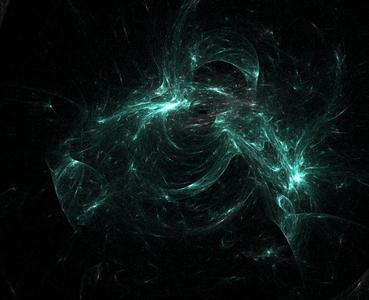The universe seems to be full of dark matter, yet no one knows what it's made of. The best guess is that invisible particles called weakly interacting massive particles, or WIMPs, contribute all this missing mass. And that idea matches the latest data generated by the Alpha Magnetic Spectrometer, or AMS experiment. This instrument lives on the International Space Station, and it may be seeing direct signs of dark matter. The study is in the journal Physical Review Letters.
宇宙中似乎充滿了暗物質,但沒人知道它們是由什么組成的。最佳猜想為:暗物質是由肉眼看不見的粒子——大質量弱相互作用粒子,或稱WIMP組成的。該猜想與阿爾法磁譜儀計劃中(即AMS計劃)得出的最新數據相穩合。這臺儀器被放置在國際空間站,用來觀測暗物質的直接征象。該研究發表在《物理評論快報》上。
The AMS catches charged particles flying through space. Its new results show more positrons than expected. Positrons are the antimatter counterparts to electrons.
阿爾法磁譜儀觀測到太空中飛行的帶電粒子。最新觀測結果顯示,這些粒子帶的正電子要比想象的多。正電子是電子的反物質。

Normal astrophysical processes create some positrons, but not as many as AMS registered. One possible explanation is that these excess positrons are a by-product of dark matter interactions. That is, they're being created by the elusive WIMPs.
正常的天體物理運動會產生一些正電子,但數量不及阿爾法磁譜儀中記錄的。另一個可能的原因是:這些多余的正電子是暗物質間相互作用的副產物。也就是說,它們是由神秘的大質量弱相互作用粒子產生的。
When two WIMPs collide, they can annihilate each other, giving rise to other particles—such as positrons. The data from AMS so far match these predictions.
當兩個大質量弱相互作用粒子碰撞時,它們會彼此消滅,從而產生另一些粒子——比如正電子。目前,阿爾法磁譜儀顯示的數據與這些預測相穩合。
The positrons might also have a more mundane source, such as the spinning stars called pulsars. Time will tell if the space-based AMS has indeed seen the first sign of what makes up dark matter—or if we're still stuck in the dark.
也許正電子的產生原因比上述講的還要簡單,比如被命名為脈沖星的自旋恒星就是這樣。時間將告訴我們:駐扎在太空上的阿爾法磁譜儀是否真的觀測到了構成暗物質的直接征象——又或者說,我們仍舊對此一無所知。











